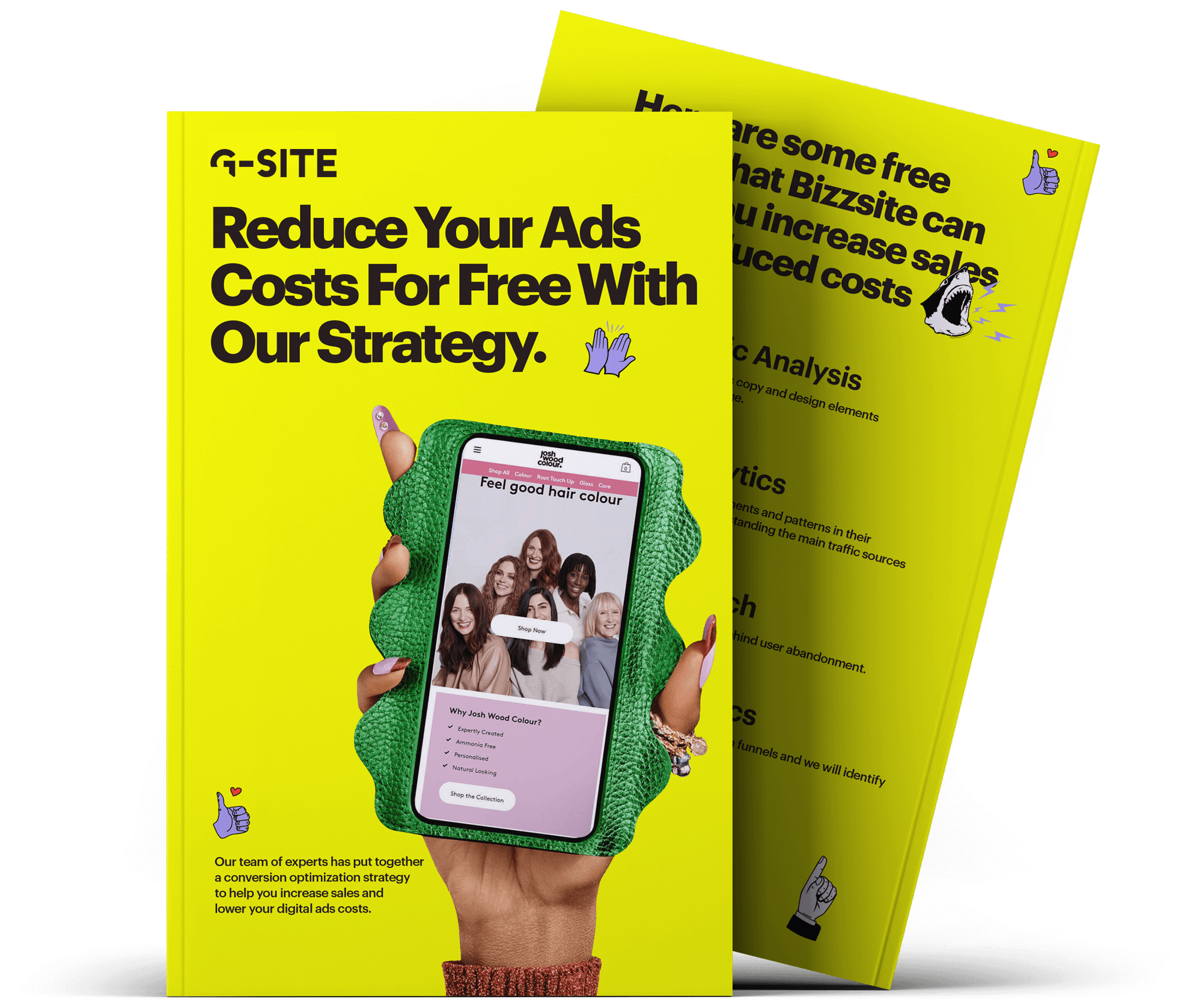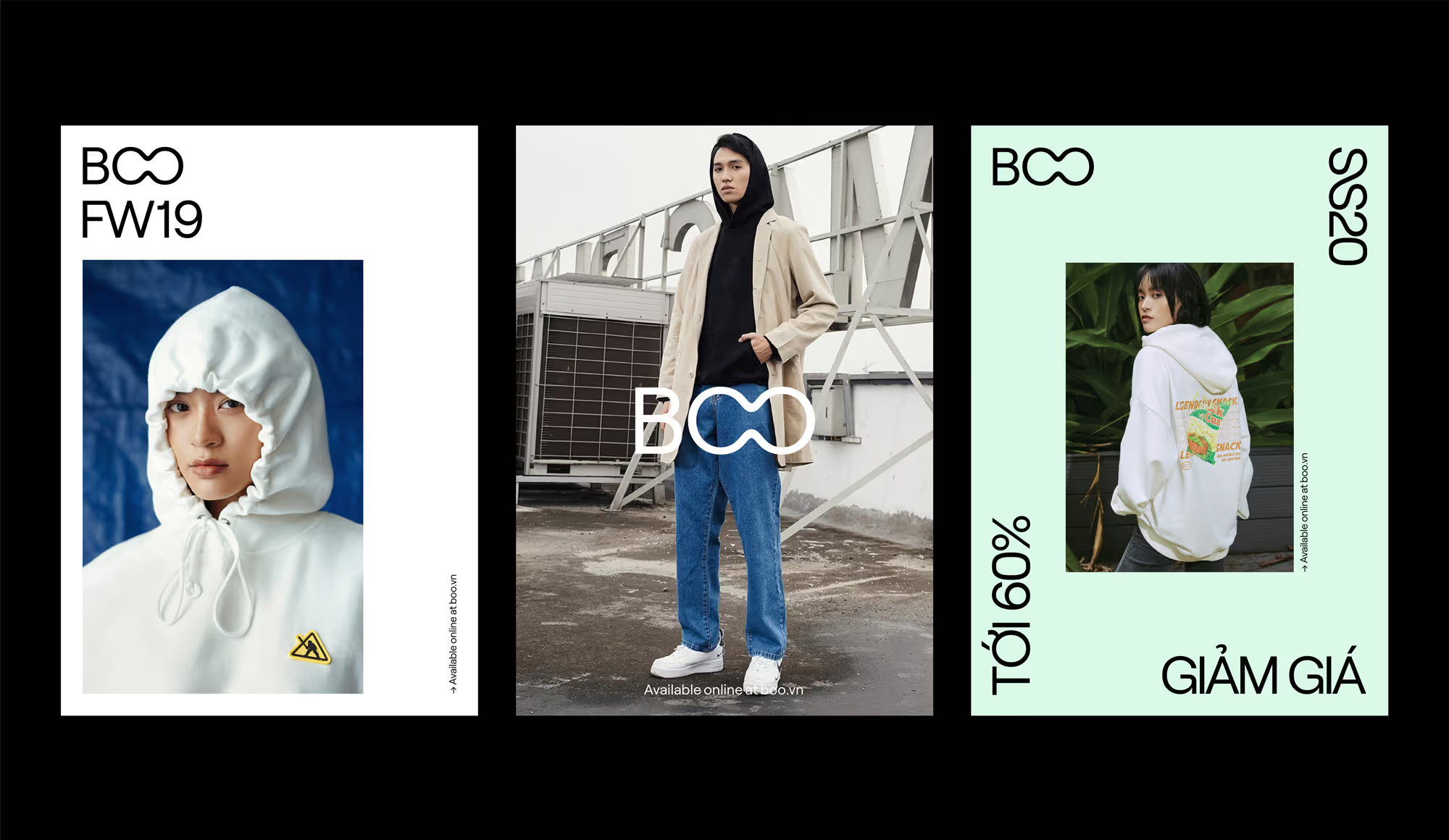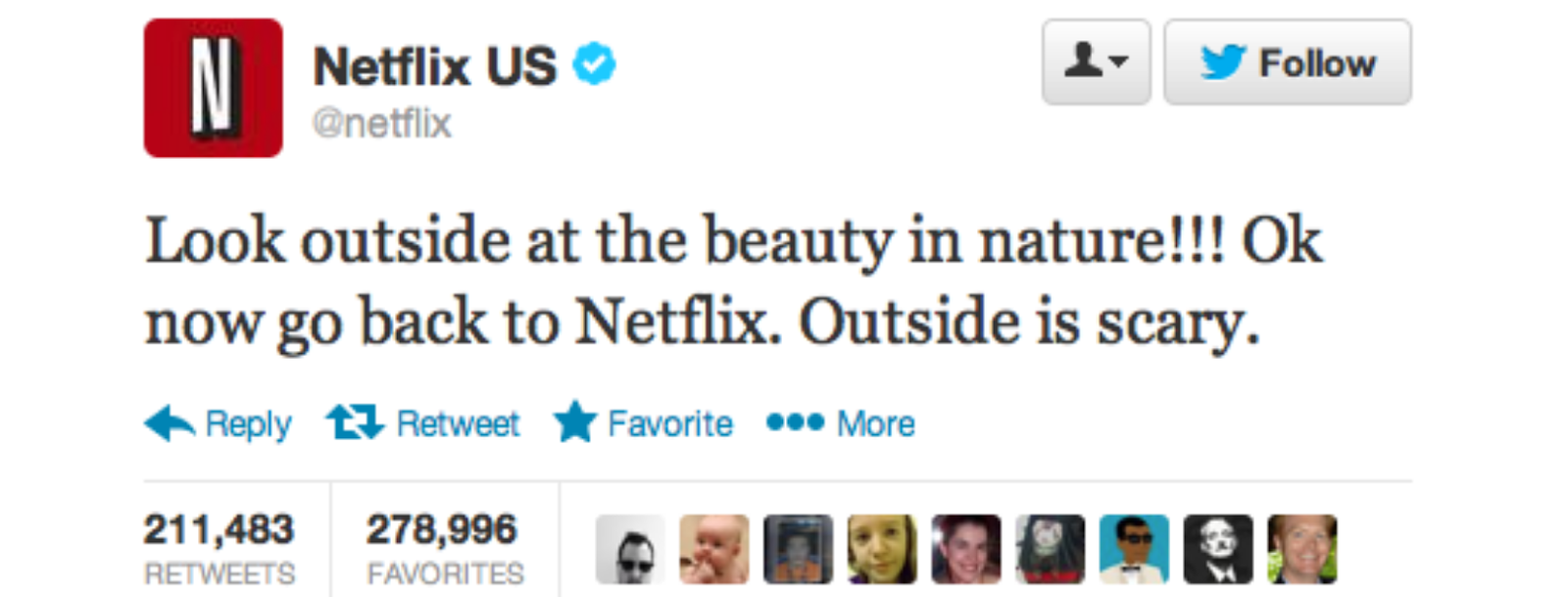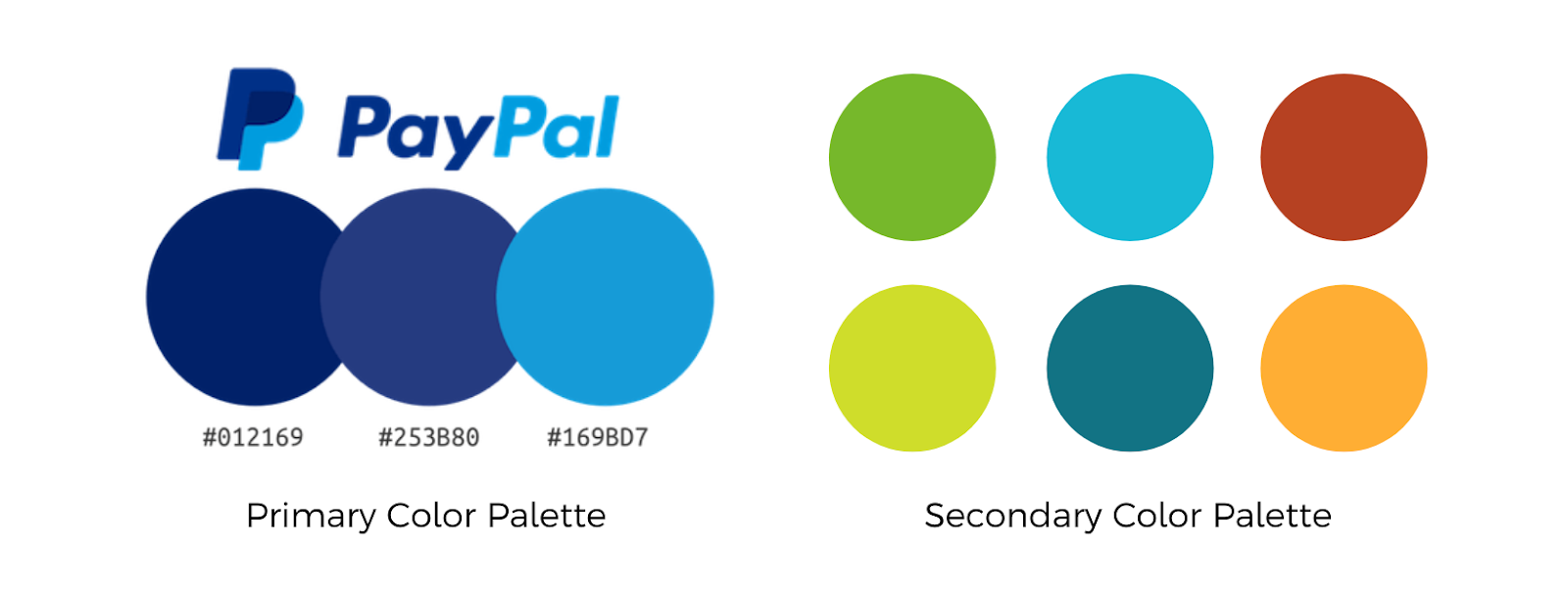%20(1).avif)
Give Me The $2,500 CRO Strategy For Free
Subscribe to
G-site sales blog
Get the best and latest in marketing and sales delivered to your inbox each week.


A brand is how businesses communicate their identity and values, represented by the sum of all elements that portray how your brand is recognized. Your logo, brand message, website design, packaging of products and services all play a part in developing a brand. When a brand is successfully defined, consumers immediately recognize your style and voice, understand who your business is, and see how your brand can benefit them.
Defining your brand identity will help determine your brand personality and highlight your business values. Essentially, you will use your brand identity to connect your brand’s deeply-held values to your target audience’s values as you communicate your product or service.
A defined brand identity builds trust, authority, and transparency by appealing to your target audience with a message or set of values that explains why your business exists, addresses your audience’s pain points, and differentiates your products from competing products. To build a strong brand identity, define the following:
Once you’ve determined these elements, your brand identity will start to organically come together and give you a better understanding of how to visually define your e-commerce brand.
.png)
Researching your industry’s biggest competitors can provide you with important insights you may have overlooked or not even considered when it comes to digitally branding your own business. Knowing what your competitors are doing right or wrong can help your business bridge the gap between similar target markets.
There are two types of competitors to research as you define your brand: direct and indirect competitors. Direct competitors are businesses that sell or market the same products or services as you. Indirect competitors don’t sell the exact same products or services, but they can still fit your target market’s needs with an alternative option and are digitally competing for the same keywords as your business.
If you’re unsure of who your competitors are, here are a few things you can do to help define your top competitors:
Cultivating a successful brand strategy is nearly impossible if you don’t know your audience. Your brand needs to bridge the gap between your competitors and appeal to your target market. In order for your brand to connect with your audience, you’ll need to fully understand who they are on a demographic, cultural and emotional level. To better understand your target audience, it’s important to consider the following:
Defining your audience will help you develop a buyer persona to create a brand voice and personality that are aligned and relevant to your audience’s needs and wants. Each buyer’s journey is unique; what connects with one segment of your audience may not connect with the other. Knowing your audience can help you craft copy that appeals to the right people, at the right time, with the right content to turn prospects into loyal customers.

Building a brand voice coincides with knowing your audience. You must be able to convey your brand’s mission and values while speaking their language. Brand voice is the personality and emotion conveyed by your brand when communicating with customers.
Brand voice plays a pivotal role in making a lasting impression on potential customers. To develop your brand voice, we’ve created this template to help you define brand characteristics and set the parameters on how to correctly use each trait to represent your brand. Keeping brand voice consistent on your website, social media platforms and advertising efforts will help your brand build a genuine online community and loyal, repeat customers.
It takes a user about 50 milliseconds (that’s 0.05 seconds) to form an opinion about your website that determines whether they’ll stay or leave. The visual aspects of your company’s brand are often a potential customer’s first impression. It’s important to ensure that you’ve carefully and thoughtfully developed these visual aspects to align with your brand’s personality.
Once you’ve developed brand guidelines for your business, be consistent across all channels. Your brand should maintain a similar color scheme, tone, overall aesthetic, and communicate a similar message that fits your brand identity and core values. Consistent digital branding increases revenue by 23% by building audience trust and establishing authority within your industry. Building your brand guidelines requires you to work through several elements, so we’ve created this template to help keep you on track.
When business owners think about a brand, the first thing their mind tends to think about is the logo. If you already have an established brick and mortar company, you may already have a logo in place. However, you’ll want to keep in mind that your logo will likely be used in different ways when you move online, so adjustments or enhancements might need to be made.

If you’re starting your logo from scratch, consider what style of design best suits your brand’s personality. How would you best describe your brand: Classic? Bold? Masculine? Dainty? Choose a couple of adjectives that represent your brand’s personality and use those to guide the rest of your logo design.
Your logo design will influence your site’s accompanying fonts. You’ll have to decide between a serif, san-serif, script or display font, which we’ll walk you through more in-depth later in this guide. Once you have decided on all of the different elements of your logo, make sure that you create various versions. You’ll need a logo that’s properly sized for the homepage of your website and you may need a condensed version for labels, a single-colored logo for business cards, and a horizontal/vertical version for your site’s favicon. A favicon is an ultra-condensed or miniature version of your logo (usually with no text) that is stored and used with the metadata of your site and appears at the top left of the web browser tab.
Be deliberate about where you are placing your logo. The consistency of placement will help to build trust through familiarity. For example, will you plan on placing your logo at the bottom left corner of your digital content, or the top right? This may seem like an insignificant difference, but remember that it’s vitally important to build that trust and consistency everywhere that you can.
Now, that we’ve got you thinking about a logo, you’ve probably already considered an arrangement of colors that you’ll be using for your brand! We’ll run through some best practices to help you pick colors that correspond with brand guidelines and bring those colors through online.

Your brand should have two distinct color palettes. Your primary color palette will consist of 1-3 colors that consumers will automatically associate with your brand. One of these colors will be used in most, if not all, occurrences of your brand’s content online and in-person. It’s very likely that one of these colors is even in your logo. Give your primary color palette ample thought; these are the colors that consumers will recognize your brand by, so be sure they’re the ones you want to stick with moving forward.
The secondary color palette should have from 1-6 colors that compliment your primary color palette and emulate the same look and feel. These colors will be used to add sophistication to your brand, achieve a functional hierarchy, enhance visual appeal, and aid in the digestion of information.
We won’t get too deep into the technical aspects of color models, but it is important to note that you will want to utilize a different color model when creating content that is designated for print versus web. Websites typically use the RGB color space, while CMYK is used in print. Keep this in mind when creating content using any graphic programs (Photoshop, Illustrator, Canva, etc.), as you’ll want to make sure that these programs are set to work in the correct color space to achieve the desired colors for your content’s final destination.
Fonts are a subtle and unique way to convey your brand’s personality. Like your brand’s colors, your fonts should be used in correspondence with your brand’s content across the board.
You’ll choose between serif, san-serif, script, and display fonts. Typically, serif fonts are used to convey timelessness or classiness, while san-serif fonts are much more modern, clean and versatile. A script font, which resembles handwriting, can also be used to convey timelessness or elegance, but different variations might be more personable or down-to-earth. Lastly, a display font is highly decorative and may contain different eye-catching graphic elements.
While a script or display font might work well with your logo, it’s best to stick with a serif or san-serif font for the rest of your website’s content. These fonts are easier to read, easier on the eye, and help establish a clear typography hierarchy which becomes important when users are quickly browsing through your site.
If you’re in need of some font inspiration, you’re in luck! Our Senior Web Designer at Grow With Studio has put together a font archive to share her favorite font pairings to help inspire your site’s typography.
.png)
Choosing your fonts will help you determine how your typography hierarchy will look on your site. Topography hierarchy helps present site content in a way that visually conveys where to look and in what sequence. The styling and placement of all site elements – both font type and images – will guide the viewer through the content in order of importance. Define your typographic hierarchy guidelines to determine the color, size, weight, and position of each font as it is assigned for your copy headlines, subheadings, and body text.
.png)
Creating functional graphics and symbols that complement your branding or logo is an excellent way to keep your users’ attention and get your messages across. Iconography is used to convey big ideas without words to limit the use of text to keep overall web design minimal and clean. An example of a common icon that is used on most websites would be the “Contact Us” icon. Make these icons a fun demonstration of your brand’s personality and style!
.png)
Branding is more than just a logo and colors. The visual identity of your brand is brought to life with branded content photography by humanizing and personalizing your brand to create trust and authority. Content photography should be a balance between product and lifestyle images that work together to tell your brand’s story. Product photography includes high-quality images that effectively showcase products and services in a clean, minimalist fashion to entice users to buy. Lifestyle images, on the other hand, showcase products and services in a real-life setting, allowing the viewer to imagine themselves being a part of that experience and encourage conversions.
Content photography is important in solidifying your e-commerce branding strategy. It can bring together all elements of your strategy to make a lasting impression, increase engagement, and increase brand consistency. Don’t limit your content photography to just your website — it can serve multiple purposes. These include:
After establishing your brand’s messaging and visual guidelines, it’s time to apply your strategy to your site’s design and go live. Most e-commerce platforms allow you to choose from a selection of pre-made templates, so pick one that you feel falls in line with the brand that you’ve developed. Once you’ve selected the right template for your brand, add in your colors and fonts, ensuring that you adhere to the color palettes and typographic hierarchy that you planned out prior.
Be concise and consistent. 38 percent of visitors will stop engaging with a website if the content or layout is unattractive. As you implement your brand strategy into your website, incorporate your brand’s story, values, and voice through both copy and content photography. Set a solid foundation for your brand by being clear and transparent on your site with information about your company’s history and mission on your “About Us” page. Remember that users should be able to infer this message on any page of your website based on the tone and style of your content.

88% of online consumers are less likely to return to a site after a bad experience. As you begin to move your business online, keep these best practices in mind to help create a positive user experience and build your brand:
%20(1).avif)
Get the best and latest in marketing and sales delivered to your inbox each week.